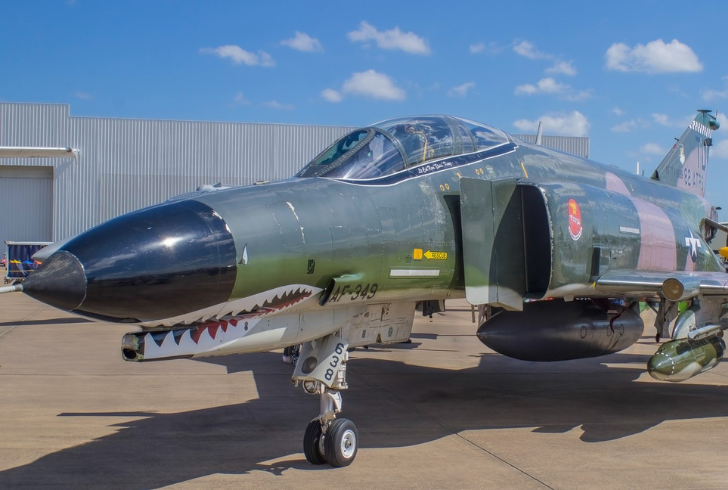South Korea’s journey from relying on foreign fighter jets to developing its own cutting-edge aircraft is nothing short of remarkable. The nation, once dependent on international support to bolster its defense capabilities, now stands as a prominent player in the global aerospace industry. The evolution of South Korean fighter jets reflects not only technological advancements but also a significant shift in the country’s role on the world stage.
A Historical Perspective

Instagram | amarillo.aviation | The F-4 Phantom was a key component in South Korea’s defense for over five decades.
In the 1970s, South Korea faced significant security threats and economic challenges. At that time, the country was in dire need of military upgrades to defend against North Korea’s superior forces. To address this, South Koreans contributed funds to purchase American F-4 Phantom jets. These fighter jets symbolized a crucial step in fortifying the nation’s defense capabilities.
The F-4 Phantom, a state-of-the-art fighter jet of its era, played a pivotal role in South Korea’s defense strategy for over five decades. Its retirement in June marked the end of an era and the beginning of a new chapter in South Korea’s aerospace journey.
Expanding Influence in the Global Market
Today, South Korea is not only a consumer of military technology but also a significant producer and exporter. The country’s progress is evident in its development of the KF-21 Boramae, a new generation of fighter aircraft that promises to be a cost-effective alternative to the American F-35. Unveiled in 2021, the KF-21 Boramae is set to enter mass production by 2026, reflecting South Korea’s ambition to enhance its defense capabilities and expand its influence in the global aerospace market.
South Korean fighter jets, such as the KF-21 Boramae, represent a significant leap from the Cold War-era F-4s. This transition showcases South Korea’s growing expertise in aircraft design and manufacturing, transforming it from a recipient of foreign aid to a leader in aerospace innovation.
The Rise of South Korea’s Aerospace Industry
South Korea’s ascension as a major defense player is not limited to fighter jets. The country has become the third-largest arms supplier to NATO countries, offering a range of affordable and high-quality military equipment. South Korean-produced K2 battle tanks and K9 self-propelled howitzers are among the notable exports that contribute to the nation’s global standing.

Instagram | tankersofficial | South Korea is now the third-largest arms supplier to NATO, providing affordable, high-quality military equipment.
The shift from acquiring American fighter jets to developing indigenous aircraft highlights South Korea’s strategic vision. By investing in its own aerospace technology, South Korea aims to enhance its defense capabilities and reduce reliance on foreign military equipment.
The F-4 Phantom
The F-4 Phantom holds a special place in South Korea’s military history. Arriving in 1969, the F-4s were instrumental in the country’s defense during a period of intense geopolitical tension. Over the years, these jets participated in various significant operations, including counterespionage missions and intercepting reconnaissance aircraft.
Despite their retirement, the legacy of the F-4 Phantom endures. The aircraft symbolizes the enduring alliance between South Korea and the United States, forged in the aftermath of the Korean War. The F-4s’ final flights were a tribute to this enduring partnership and a reflection of South Korea’s remarkable transformation.
The Future of South Korean Fighter Jets
As South Korea advances in the aerospace sector, the focus is shifting towards enhancing and expanding its defense capabilities. The development of the KF-21 Boramae represents a strategic move to position South Korea as a leader in next-generation fighter jets. With mass production slated to begin in 2026, the KF-21 will not only strengthen South Korea’s defense but also bolster its position in the global defense market.
South Korean fighter jets like the KF-21 Boramae are set to play a crucial role in the country’s future defense strategy. As the nation continues to advance its technological prowess, the future of its fighter jets looks promising, reflecting the nation’s growth and strategic vision.










